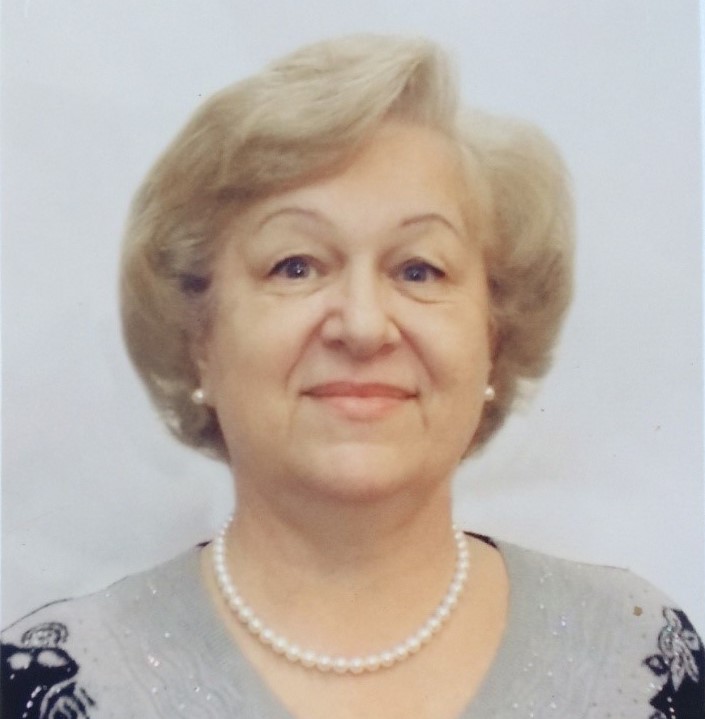

Matsegora Nina Anatoliivna – doctor of medical sciences Ph.D., Professor, Head of the Department of Phthisiopulmonology
Tell us briefly about the history of the department: when was it founded, what were the prerequisites for it?
At the beginning of the twentieth century, the incidence of tuberculosis in Kherson province, which included Odessa and Odessa region, amounted to 926 thousand, and the incidence of active forms of tuberculosis in Ukraine is 1009 per 100 thousand of population.
In 1921, the first regional clinical tuberculosis hospital in Ukraine with 75 beds was opened in Slobidka, Odessa, on the basis of which in 1922 a tuberculosis institute named after R. Koch was organised. Darii Lvovych Meerson became its director. The institute had four X-ray diagnostic rooms, a clinical laboratory, physiotherapy and exercise rooms, an inhaler, an aerarium, and a large experimental department.
Trained medical personnel were needed. That is why in 1922 the Department of Tuberculosis was founded at Odessa Medical Institute, headed by Darii Lvovych Meerson. Employees of the Department of Tuberculosis performed research work on the basis of the branches of the Research Institute.
What kind of department is it today? What are the main scientific directions?
Today the department is engaged in such scientific areas as the problem of the spread of resistant strains of Mycobacterium tuberculosis in Ukraine and the world; study of the characteristics of comorbidities and their role in the formation of chemoresistant pulmonary tuberculosis; chemoresistant tuberculosis in combination with HIV infection: pathogenetic and clinical features, difficulties in diagnosis and treatment.
We have studied the pathomorphological changes of the internal organs in isolated chemoresistant tuberculosis and co-infection of ChRTB / HIV / AIDS, compared with lifelong diagnosed pathology. A comparative assessment of lifelong and postmortem changes of internal organs in patients with ChRTB and ChRTB / HIV has been made. The analysis of biochemical parameters in patients with ChRTB and ChRTB / HIV who were in the terminal state has been performed. Ways ChRTB and ChRTB / HIV prevention have been studied.
Based on the research, new comprehensive methods of approach to information collection in the epidemiological study of patients with chemoresistant tuberculosis have been developed, based on which the informative significance of various endogenous and environmental risk factors for dysregulatory conditions and comorbid pathology and their relationship to chemorelated tuberculosis has been identified.
Some values of epidemiological data and family history in the assessment of hereditary predisposition to dysregulatory states and comorbid pathology in chemoresistant tuberculosis have been analyzed.
Clinical-laboratory and functional features of dysregulatory states in chemoresistant tuberculosis have been specified and differentiated treatment regimens of the examined patients have been developed, according to the obtained epidemiological data.
In addition, the pulmonology field is being developed, about which three candidate dissertations have been written.
In the last 7 years 59 articles in scientific journals have been published, from them 12 – in foreign editions and 1 – in SCOPUS, and also 4 methodical recommendations.
Our department has received 8 patents for utility models and 6 patents of Ukraine.
6 introductions of patents into the educational process: 1 – at the Department of Clinical Pharmacology, 1 – at the Department of Medical Biology, Genetics and Clinical Immunology and 2 – at the Department of Phthisiopulmonology.
Tell us about your team: how many people work, what degrees?
The department has 11 employees, including one professor, six candidates of medical sciences, two assistants who have planned candidate dissertations and completed them by 95%, and one part-time assistant who also wants to get engaged into the scientific activities. Associate professors Lekan A. Ya., Smolska I.M., assistants Omelyan L.P. and Kaprosh A.V. work most actively in my team.
How many students are there at the department?
The following students study at the department:
– all ONMedU students of the 5th year, according to the standard plan and work programs of the Ministry of Health of Ukraine, 4th year of the Faculty of Dentistry, 6th year of the Faculty of Pediatrics;
– interns in the specialty of “tuberculosis”;
– related interns (general practice and family medicine, surgery, internal medicine, etc.);
– TB doctors from the faculty of postgraduate studies;
– doctors of other specialties from the faculty of postgraduate studies.
Tell us about the clinical base on which students practice?
For 6.5 years, the clinical base has been located in the 3rd city anti-tuberculosis dispensary at 30 Otaman Holovaty St. From this year, due to the closure of the city TB dispensary, the department moved to the TB health resort “Arcadia”, having signed an agreement about the clinical base with its management.
This health resort treats patients with active tuberculosis in the second phase (maintenance):
– 50 beds – TB of the respiratory system;
– 80 beds – TB of the urinary system;
– 80 beds – TB of the reproductive organs;
– 50 beds – TB of eyes and other locations.
You have been heading the department since 2013. How has it changed during this time?
Scientific activity has intensified – dissertations, printed works, conferences. Three candidates of medical sciences became associate professors. Three new young employees came to the department. We have resumed the work of Odessa Regional Scientific Society of Phthisiopulmonology. We are constantly in touch with scientific schools of Ukraine.
What are the plans of the department for this academic year?
In 2020, we have planned a new research topic: “The effectiveness of the use of physical factors in the treatment of patients with obstructive pulmonary disease and coronary heart disease.”
We continue to study the condition of patients in the maintenance phase of treatment of respiratory tuberculosis and develop ways to improve the lives of patients.
The direction of prevention of the development of pulmonary heart failure, from which the majority of TB patients die, and re-treatment of comorbid conditions in patients suffering from ChRTB / HIV remain relevant.